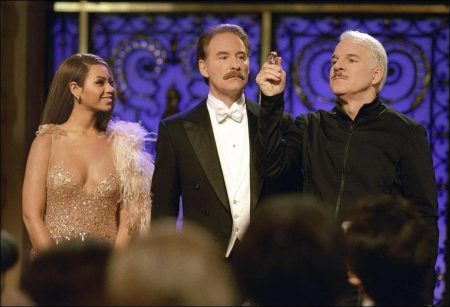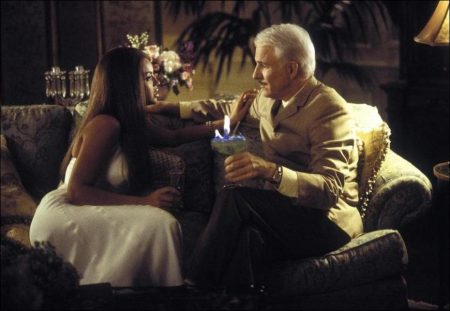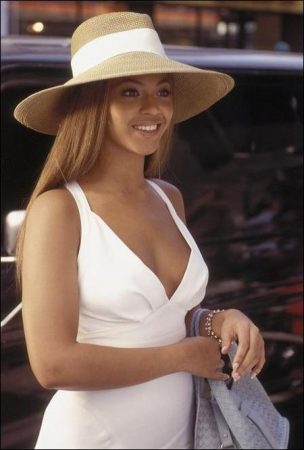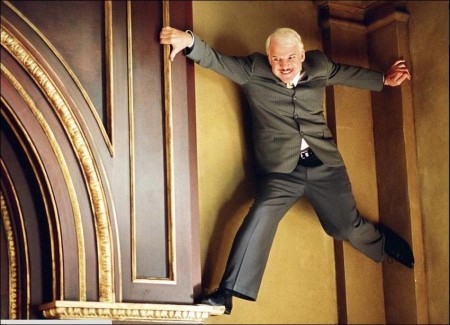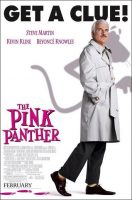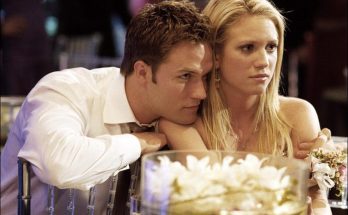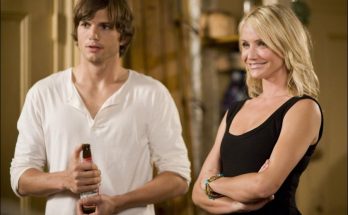Tagline: Get A Clue!
A world-famous soccer coach has been murdered and his priceless ring has been stolen – a ring set with the stunning diamond known as the Pink Panther. The French government needs a master detective to solve the crime and recover the gem…but he’s not available, so they recruit Inspector Jacques Clouseau.
Comic superstar Steve Martin stars as Clouseau in an all-new adventure of The Pink Panther. A stunning pop star (Beyoncé), a soccer player, a Chinese assassin – who committed the crime? And can anyone solve the case? Clouseau and his partner, Ponton (Reno), must unmask the murderer and keep their boss, Dreyfus (Kline), from taking credit for the victory, all without bringing the French legal system to a screeching halt. Get ready to be tickled pink.
Inspector Jacques Clouseau, a name that strikes fear into the hearts of criminals everywhere — and anyone else he comes across as well. Maybe it’s because his deductive powers are so inadequate, his grasp of the obvious so elusive, his command of the language so severely limited and his physical coordination so completely lacking.
But while his approach may be unorthodox and often confounding, he always manages to solve the crime — in his own fashion. At least until now. In the action-packed comedy, The Pink Panther, the bumbling Inspector Closeau (Steve Martin) takes on his most important case ever.
World famous soccer coach Yves Gluant has just led Team France to victory over Team China. Surrounded by grateful adoring fans and his beautiful lover, the international pop star Xania (Beyoncé Knowles), Gluant is felled by a poisoned dart. In the ensuing panic, Gluant’s priceless diamond ring, “The Pink Panther,” mysteriously disappears.
The murder becomes a media sensation and a national obsession. Cracking the case falls to Chief Inspector Dreyfus (Kevin Kline), who is up for the prestigious Medal of Honor — for the seventh time. Aware that he cannot afford to make a single mistake — at least none that can be attributed to him — Dreyfus presses the indefatigable Inspector Clouseau into service. Clouseau and his new assistant, the steadfast, stoic Gendarme Gilbert Ponton (Jean Reno), follow a tangle of clues that leads them all over Paris and, eventually, New York City.
In the Big Apple, Clouseau and Ponton travel to Times Square and the nearby diamond district, as well as to the city’s posh Fifth Avenue and the renowned Waldorf Astoria Hotel. Along the way, Clouseau and Ponton are waylaid by elusive diamond cutters, would-be thugs, notorious bandits, smarmy casino owners, secret agents, mysterious trainers and an exotic beverage called “The Flaming Mojito.”
One by one, Clouseau narrows his search and tracks down the most likely suspects. They include Xania, a spurned soccer star (William Abadie), a millionaire casino owner (Roger Rees) and a flirtatious P.R. publicist (Kristin Chenoweth)
Clouseau’s process is fascinating, if harrowingly circuitous. But he never loses his focus, his purpose or his pride — much to the consternation of Dreyfus, who may or may not have Clouseau’s best interests at heart. In the end, with the aid of Ponton and his devoted secretary Nicole (Emily Mortimer), Clouseau must unmask the murderer and keep Dreyfus from taking credit.
The Panther Strikes Again
The legend of the “Pink Panther” began in 1963 with Blake Edwards’ original The Pink Panther starring David Niven, with Peter Sellers in the role of Inspector Clouseau. The film was conceived as a vehicle for Niven, who was a major Hollywood star at the time. Sellers wasn’t even Edwards’ first choice for Clouseau (it was Peter Ustinov). But Sellers’ performance as the hilariously inept French detective proved to be the film’s lasting legacy and the actor went on to star in several popular sequels.
For more than a decade, the beloved franchise has lain dormant, its reintroduction to contemporary audiences reliant on finding the perfect actor to step into the late Sellers’ shoes. Steve Martin proved to be an inspired choice, since his witty, slightly absurd brand of comedy and his physical style echoed that of Sellers. According to the new Pink Panther director Shawn Levy, “The Clouseau character is an homage to silent film comics like Chaplin and Keaton.
As imagined by Blake Edwards and Peter Sellers, the character referenced silent film comedy where the humor was physical rather than verbal. In the same way that those classic film comics have endured for nearly a century now, Clouseau’s intuitive, physical humor is equally timeless. What makes Steve Martin the perfect Closeau is his incredible, unique talent as a physical comic. Whether it’s his ‘wild and crazy guy,’ the man with the arrow through his head or The Great Flydini, Steve has always been edgy and inherently physical in his humor.”
Producer Bob Simonds adds that The Pink Panther is the first movie Martin has starred in since The Jerk that plays directly to his comedic persona. “Steve is a really interesting combination of vulnerability and self-assurance. He’s got a gift for physical comedy, but he is also incredibly erudite. He possesses an incredibly sophisticated sense of humor with an underbelly of big laughs. Just as importantly, his comedy is ironic and smart but never mean-spirited. That works because all the comedy in the Pink Panther films is at the expense of Clouseau, who is simply trying to maintain his dignity in all these situations. Our ambition in making this movie was not only to be really funny but to have audiences emotionally invest in Clouseau and all that plays into Steve’s strengths.”
Simonds was producing Martin’s recent hit film Cheaper by the Dozen (which was also directed by Levy) when MGM approached him about taking on similar chores for The Pink Panther. Soon after, Martin was offered the role of Clouseau and he tried out one of his ideas for the character on Levy after one of their looping sessions for Cheaper by the Dozen. “I thought it was so funny that it led to a month-long back and forth of other ideas and concepts and gags,” says Levy. “What began to emerge was a story that was true to the franchise but fresh and original and specific to Steve’s kind of comedy. After a few weeks of this, we came to a mutual agreement that I would direct the film.”
In fact, without those improvisatory sessions, Martin might not have even accepted the role. “When I first got offered the part, I said no. I didn’t think it was right for me,” Martin says. “But I thought about it and thought about it and I tried writing a few scenes to see if I could get my head around it, and they seemed funny. Still, you need an audience to test comedy and Shawn turned out to be my first audience.”
Both Levy and Martin were aware that Blake Edwards’ original movies with Peter Sellers were regarded as classics. “We’re not trying to compete with or top the original Pink Panther movies,” says Levy. “Steve and I were appropriately respectful. But while we honored the history we were inheriting, we were trying to reinterpret the franchise. We were hoping to make something relevant and current but still in the tradition of The Pink Panther movies.”
The tone of the new film very much reflects Martin’s humor, Levy continues. “Where I think we’ve updated is that it’s got a level of irony and wit that’s specifically Steve Martin in tone. The movie benefits from that just slightly left-ofcenter observational point of view that Steve is famous for.”
Adds producer Simonds: “What Steve tried to do is to take the essence of the Clouseau character who isn’t really bumbling. He’s just traveling on a different track than everyone else.”
Martin’s Clouseau is rooted in Sellers and Edwards, the actor says, but “I bent it a little bit because I am a different person. When I looked at those movies, I understood that Peter Sellers could ad-lib all day within the context of the character. He understood Clouseau so well and I could tell he felt funny. I was a long way from that when I first started thinking about the part, but I knew it had to feel funny to me and the only way that would come out is through my own comic sense. I can’t tell you exactly what it is, because it’s a little mysterious, which I think is a good thing.”
After Levy and Martin’s initial conversations about Clouseau, they decided that if something was funny, it went into the script, and if they both still found it funny a month later, it stayed in the script. “If it still made us laugh a month after that, we shot it,” Levy contends, “and if it still seemed funny in post-production, it stayed in the movie.
Martin compliments Levy’s on-the-set ability to create an encouraging atmosphere for comedy ideas to develop. “Shawn and I have a very similar view of comedy and that kind of kinship is really hard to find. I also think we’ve arrived at a kind of shorthand of what’s funny and what’s not, of what should be tried and what shouldn’t. There was never any debate. We were always in agreement. As I’ve learned from my other films, the funniest thing in the movie is often something that has been thought up quickly — the day before, that day, that hour, that minute — and for that to happen, you can’t be working in a restrictive environment.”
Levy and Martin were also in sync about signing on another superb physical comedic actor for the project — Kevin Kline, who portrays Clouseau’s pompous, scheming boss Dreyfus. “Kevin’s body of work speaks for itself,” says Levy of the actor who won an Oscar® for his brilliant comic turn in A Fish Called Wanda. “He is profoundly different from Steve in terms of his process, but they have been close friends for 20 years.
He liked our take on the new film and wanted to be a part of it. Our intention for the actor who played Dreyfus was that it be played by someone who really understands comedy, who grasps the timing and nuance of when Dreyfus needs to be funny and when he doesn’t. He needed to recognize where the joke was, because if the joke is on Clouseau, it could get cluttered to have Dreyfus going for a laugh as well. Kevin immediately sensed when it was his job to be funny and when he needed to be grounded so that Clouseau could be absurd.”
According to Kline, “Shawn Levy allowed me to experiment with varying degrees of lunacy at the beginning of shooting until we arrived at what felt right for the film — comic but not cartoonish. He also allowed Steve and me to improvise at times.”
Although The Pink Panther is a broad comedy, Kline approached it with his usual thoughtful diligence and researched the role by spending a few days with the French police. “Even for a broad comedy, research can come in handy. I found it illuminating to see how the French go about police work.”
He says he also enjoyed the chance to work with Martin again, especially since their only other co-starring opportunity was the more serious Grand Canyon. “We’d never had the opportunity to do a comedy together, so I jumped at the chance. Needless to say, I enjoyed the process as much as I imagined I would.” Martin and Kline engaged in a slapstick dance throughout the movie and Kline, in particular, relished the physical comedy. “Having grown up on Charlie Chaplin, The Marx Brothers and W.C. Fields, I have always relished the opportunity to do physical comedy,” Kline remarks. “It provides a rare opportunity for me to do my own stunts. The producers don’t seem to mind risking my life if it gets a laugh.” The rest of the cast for The Pink Panther, Simonds says, was similarly comprised of performers who weren’t just funny, but strong actors as well. “Beyoncé’s incredibly gifted and we have such respected actors as Jean Reno, Kristin Chenoweth and Emily Mortimer, to name just a few.”
But even the most experienced actors on the set, sometimes fell prey to Martin’s comedic genius. “Many of my scenes were with Steve and it was really difficult to stay in character because he was so funny and I never knew what he was going to do,” confides Beyoncé Knowles. “We shot this scene at the Waldorf in New York, which Clouseau basically destroys with something called a ‘Flaming Mojito.’ My character is trying to be very romantic and sexy with Clouseau, but he’s drinking this ‘Flaming Mojito.’ Steve’s expressions and attitude were so hysterical I had to keep thinking, ‘Be sexy. Please try to be sexy’ when all I wanted to do was laugh.”
In addition to being hilarious, Beyoncé says that Martin added an appealing emotional layer to Clouseau. “Steve just made you love Clouseau because even though he was funny and silly, underneath it all, he was sincere and sensitive and loving.”
The actress was pleased to be working again with director Levy, who had written and directed a popular TV series for the Disney Channel, “The Famous Jett Jackson,” in which he had cast her. “I was 16 or 17 and it was my first time acting ever and I was very nervous but he made me feel so comfortable. I didn’t know he was the director of The Pink Panther, but when I found out I thought, ‘This was meant to happen. This is a reunion.’”
Production on The Pink Panther was marked by Levy’s quick-paced shooting style. “Everyone who comes to my set for the first time — whether it’s actors or crew members — goes through some initial trauma when they realize that I always move quickly,” Levy says. “The reality is I’ve never seen anything get funnier after 20 takes. I’ve never seen a scene get funnier when you’ve been shooting it for two or three days. Steve enjoyed a brisk pace. He knew what I wanted, wanted to give it to me and then, when he was done, to move on. Some directors believe in 40 takes and maybe that works for them. For me, I try to make movies with my energy and I like to keep things moving forward and capture the momentum and enthusiasm with which I come to work. I think my movies reflect that energy.”
And that suited Beyoncé perfectly, she says, since she was sandwiching the movie between concert dates, commercial endorsements and the new Destiny’s Child album. “I only had a month off originally because Destiny’s Child was going back into the studio and I had to decide whether to do a movie or take a vacation. When I was offered The Pink Panther I thought, ‘Steve Martin, Kevin Kline — that’s not work, it’s like a summer vacation and a great educational experience.”
While Xania is a new Pink Panther character, there have been other beautiful and possibly duplicitous women in the movies before, played by actresses including Claudia Cardinale, Elke Sommer and Dyan Cannon, to name just a few. The latest Panther does introduce several a bona fide original characters.
One of them is stalwart policeman and Clouseau’s confidante and partner, Gilbert Ponton, played by the well-known French actor Jean Reno. “The character of Ponton already existed when Steve and I got involved in the project,” says Levy. “And we liked the idea of Clouseau having a true sidekick, someone who is set up to be a bad guy in that he works for Dreyfus, but develops a loyalty to Clouseau. Ponton is an incredibly likeable and sympathetic character who helps anchor Clouseau’s zaniness. The role was actually hard to cast, because we needed someone who could be a wall for Steve to bounce off of. But after meeting with Reno in Paris, I knew there was no second choice. He had that simplicity, that rock solid, steadfast quality that is Ponton.”
While American audiences know Reno mostly for his roles in dramatic, action pictures like The Professional, Mission: Impossible and Ronin, in Europe, he is also known for his work in such hugely successful comedies as Les Visiteurs and will soon be seen in the feature film version of The Da Vinci Code. As The Pink Panther moved into production, Levy became aware of Reno’s subtle comedic style — further proof that he’d made the correct choice. “Jean is funny in the quietest, smallest ways,” says the director. “He is a terrific straight man because he knows he can do very little and still be present on-screen. It takes a very confident actor to do that little and be that effective.”
Reno explains that he enjoys alternating genres. “I like change. That’s my work as an actor,” he says. “Comedy is a nice alternative for me personally because everyone is smiling and trying to make other people laugh on set. That makes it very enjoyable. As for Ponton, my job was not to imitate or compete with Clouseau, but to add something in a different way that is, hopefully, funny.”
Although Ponton is a new character, there are similarities in his relationship to Clouseau and that of his houseboy Kato in the earlier films, Levy explains. “We weren’t sure that would work today, not simply because of the political incorrectness of having an Asian houseboy in 2005, but because what worked for Peter Sellers doesn’t necessarily work for Steve Martin. Besides, I wanted to try something different. We kept the idea that Clouseau attacks Ponton unexpectedly but our joke is that Clouseau never ever lands a punch. These fights are immediately over because Clouseau is fundamentally inept at martial arts. The one punch Clouseau lands on Ponton is one of the most poignant moments in the film. The Clouseau-Ponton dynamic is comical but it is also one of real friendship. When Clouseau is at his lowest point in the movie, the one guy who stands by him is Ponton.”
Emily Mortimer plays Dreyfus’ ingenuous secretary Nicole, who becomes Clouseau’s helper and secret admirer, says she thoroughly enjoyed herself while making The Pink Panther. She was gratified for the chance to play against type and to explore working in comedy, especially physical comedy. “I didn’t imagine they’d be particularly enchanted with me,” she confesses. “So, I just decided to make Nicole as real as I could within the confines of the genre and rely on the physical parts of the scene for the big laughs. By the end, I came to enjoy those aspects so much that I lost my serious actor intent completely. I became a total comedy tart.”
While Mortimer’s comedic skills impressed Levy, he says it was her overall adorableness that convinced him to cast her as Nicole. “Nicole has always been our Audrey Hepburn character, a gamine with innate lovability, someone who is beautiful and winning but not seductive. She is very much the friend to Clouseau, the one person besides Ponton who stands by him in good times and bad. The fact that towards the end, she and Clouseau reveal a certain chemistry is a nice bonus and that was Steve’s invention.”
Kristin Chenoweth, who is cast as the flirtatious Cherie, the P.R. representative for the soccer team, was equally charming but, unlike Nicole, definitely not an innocent. “Cherie is a bit promiscuous,” laughs Chenoweth. “Let’s just say she wears a short skirt that has a lot of cherries on it and cherry earrings too.”
Chenoweth is well known to Broadway audiences, having won scores of awards, including the Tony, for You’re A Good Man, Charlie Brown and, recently, to film audiences for her role as one of Nicole Kidman’s best friends in Bewitched. During production, she juggled her role in the film with her performance in the hit Broadway musical “Wicked,” for which she earned another Tony nomination. “I knew that if I got the part, I would be doing double duty between ‘Wicked’ at night and The Pink Panther during the day. But it was worth it to work with a comedy genius like Steve Martin. Working with him was great. He is so in the moment that every single take was good.”
While Chenoweth does not lend her amazing voice to the film, she did treat the director and the cast and crew to a musical parting gift. After she completed her last scene, Levy asked her to sing a song. Chenoweth obliged and in her legendary soprano, belted out the classic standard “You’ll Never Know.”
Music became a vital tool during the making of the movie. Between takes, Levy invariably played the famous Henry Mancini Pink Panther theme. “I’d use the song for inspiration because it’s one of the most brilliant, memorable themes in movie history and it sets the tone perfectly. It’s swanky, cool, knowing, a little ironic and, above all, playful. It always heightened the mood of whatever we were doing.”
Typically, Levy popped a CD into a portable player on the set. When that wasn’t available, he used a cell phone ring tone and, when all else failed, he’d sing it. The Pink Panther also allowed Levy to venture into another musical world. At the climax of the movie, the character Xania sings an iconic song as mayhem ensues around her. The song, “A Woman Like Me,” is the result of a unique collaboration between director and Beyoncé. “The song is a huge part of the climactic sequence and we needed something that worked dramatically,” says Levy. “We also wanted something that was musically cool, that reflected Beyoncé s style and taste. We sent out word to the musical community and we received a flood of songs from some of the country’s top songwriters. After listening to them, “A Woman Like Me” bubbled to the top.”
Adds Beyoncé, “It had the strength of a Tina Turner song but the drama of a Bond tune. It definitely fit the character. She’s talking a lot of noise in it, stuff like, ‘Do you think you can handle a woman like me?’ Xania is like that.”
“When we got in the recording studio, Beyoncé made that song her own like nobody else could. She was on fire,” says Levy. “To see her in a recording studio is like watching the Queen. She just laid down track after track, no deliberation, no equivocation. Then she doubled and tripled her own voice, basically laying in six-and seven-part harmonies with herself. It was amazing.”
Beyoncé certainly knows her way around a recording studio; she’s been singing professionally since the age of nine. Music to her, is like comedy to Martin — second nature. “I know when I’ve got it,” she says. “It’s a gut thing. I can’t tell you how I know. I just do.”
In addition to offering her the opportunity to act opposite such comedy veterans as Martin and Kline and to exercise her vocal chops, Beyoncé also relished the opportunity to wear fashions designed for her by costume designer Joe Aulisi. “The clothes?,” she says. “Oh my God! Joe Aulisi came to one of my concerts prior to the start of the movie and showed me some of the sketches and I couldn’t wait to try them on. The character of Xania is an international star and very fashion-forward, so, naturally, the wardrobe was fantastic. Everything had this vintage, 1940s kind of feeling, a Parisian feel — very Josephine Baker, but with a contemporary sensibility. Everything fit so well. You could tell it was custom-made. The little details were extraordinary, from the earrings to the little butterflies and the shoes, especially the polka dot shoes they made for me. It was all exceptional.”
Beyoncé’s wardrobe ranged from what Aulisi calls a Belle du Jour dress — a summery white frock with a low cut V-neck and a billowy skirt that literally stopped traffic in New York City — to an incredible, diaphanous ball gown that was all glittery bronze sequins hand-sewn to a sheer sheath that hugged the actress’ figure and highlighted her caramel colored-skin.
“Beyoncé is a designer’s dream,” says Aulisi. “We made six outfits for her and she was just a joy. Overall, the inspiration for her character was definitely Josephine Baker who, like Xania, loved diamonds and jewelry. So, we began with that idea and that’s how the gown for the ballroom scene evolved. Our hope was that she would look like a freshly uncorked bottle of champagne, which was how we came up with the beading.”
Aulisi’s costumes also played a significant part in establishing the character of Clouseau. The wardrobe helped Martin explore and define the character, Levy claims. “Sometimes an actor will find the character from the outside in and other times from the inside out. I remember Steve saying early on that to do Clouseau, he would have to figure out the walk, the posture, the accent, the voice, the mouth, the eyes. He always knew that he would only feel comfortable playing if he figured from the outside what the physical aspects were. So, the walk, the mustache, the expression and in particular, the wardrobe were critical to helping him find the character.”
In the original Pink Panther, Clouseau was very well tailored and also looked impeccable, according to Martin. “I always wondered how that matched up with a bumbling inspector, but it actually does, quite a bit,” he says. “Closeau doesn’t think he’s inept at all. He considers himself to be a man of the world, confident, capable, urbane. At first, we tried a lot of different outfits and eventually we modeled our main suit design on a kind of 1960s mod look. All the costumes were brilliantly interpreted by Joe Aulisi.”
In addition to designing wearable clothes, in the case of Clouseau, Aulisi says he wanted to add humor to the wardrobe as well. “The fun part was finding subtle things for each character. In the case of Steve Martin, we prepped by trying to find out what worked for Steve while still honoring the original Pink Panther films. I found some great research photos that included some by the great French photographer Jacques-Henri Lartigue, who took wonderful photos of ordinary people, but they were always slightly askew, their actions quite bizarre
I thought that would fit Steve’s personality and his Clouseau very well. We also referenced a contemporary cartoonist, Jean-Jacques Sempe, who covers Paris life and whose humor is very French and very modern. Drawing on those two artists, we worked out Steve’s look — slightly 1960s period, but we changed the proportions so that the jackets are a little too tight or short, the pants are a bit balloon-y, made from very soft fabrics so that they blow in the wind and are also too short so that we see his striped socks and enormous, long pointy shoes. The idea was to be believable, but to add humor, to be a little off-center.”
Martin also occasionally donned Clouseau’s signature trench coat in the film, but even that took on a modern twist. “We decided that he would wear the beret – because it looked very amusing on Steve and was a better fit than the old hat,” says Aulisi. “We used the trench coat because it has become so emblematic of a detective, but we shortened it, stylized it in the back, so it became a little pointy and again, a little off-center.”
Martin’s wardrobe, in fact, reflects not just Clouseau’s “off-center” personality but his entire milieu. As production designer Lilly Kilvert notes, Clouseau’s world is “recognizably real but it’s a heightened reality. Everything is slightly softened, prettier and old-fashioned. It is a simple tableau, a place where an innocent like Clouseau could exist. The Pink Panther lives in its own period, it’s not the past, it’s not the present, it has its own benign quality, and I wanted to give both New York and Paris a kind of buffed quality so that they were still themselves, but slightly less edgy and real, more our dream of Paris and our dream of New York.”
This approach meant that Dreyfus’ offices were picturesque and lavishly Gallic, with high ceilings, important paintings, ornate moldings and masculine, tasteful and refined furniture, in tones of brown and ochre. Because all sorts of Clouseauinduced mayhem take place in these regal chambers, Kilvert had to design the sets with the calamity in mind. The sets, which were built on the stages of the Kaufman-Astoria studios just outside of Manhattan, were designed with walls that could be removed and re-set quickly, to accommodate both the movement of the camera and the evolving comic chemistry between Martin and Kline. “It took about eight weeks to build the sets and basically, they were all constructed with ‘wild’ walls,” says Kilvert. “Dreyfus’ offices had density and gravitas, in terms of their look, but at the end it was just scenery that had to work for the camera.”
Levy’s Pink Panther marks the first time that Inspector Clouseau has visited New York City, which offered some potentially hilarious fish-out-of-water moments in locations such as Times Square, Fifth Avenue and the stately Waldorf-Astoria Hotel. It also meant that some of Kilvert’s Paris and Italy interiors were actually in Manhattan, meaning she had to seamlessly blend the faux Paris with the real one. For example, New York’s famed Beaux-Arts Public Library, with its imposing marble archways and elaborate murals, served as some of the interiors for Paris’ Palais de Justice, where Dreyfus was headquartered. That and the interiors of his office, built at the Kaufman-Astoria studios, had to connect to Paris’ 700-yearold Sorbonne University, which served as the Palais de Justice exterior and ballroom.
The ballroom itself proved to be an exciting challenge for Kilvert, especially since she had to supervise its design and construction in Paris while working in New York. During filming, Kilvert oversaw design crews in three separate countries simultaneously, to make sure that while the shooting crew was on the sets and streets of New York, their counterparts were preparing to shoot in Paris and Prague. “I love working in New York and I knew we’d shoot a majority of the movie there. But I also love Paris and speaking French (Kilvert is fluent), so that excited me as well,” she says. “But I did have terminal jet lag. It was interesting having crews working in different countries because they do things slightly differently. For example, I had to find out who in France actually deals with small props — the set decorator or the on-set prop man? Is there an on-set painter? Little things like that become huge, especially with so much detail work in the set. So it helped enormously that I spoke French.”
The detail requirements for the ballroom scene, Kilvert adds, were particularly crucial. “The ballroom scene is the climax of the movie, where all the cat-andmouse shenanigans come to an exciting and hilarious close. To accommodate the frantic activity involved when Clouseau closes in on the murderer and the thief, we need several specifics. Most importantly, we had to be able to look down from the ceiling onto a stage where Beyoncé was singing. The need to have a dramatic setting is what led us to the Sorbonne.”
The Sorbonne, the fabled French University originally founded in the 13th century, has a commanding beauty with ornately filigreed ceilings and marble hallways — but it would never be confused with a glitzy ballroom.
“Stylistically, it was not where we were at,” says Kilvert, “even if it delivered architecturally. So, we had to dress it to make it seem more presidential and glittery. We jazzed it up with chandeliers and tapestries and flowers. We laid about 400 meters of red carpet and filled it with hundreds of extras dressed in fancy gowns and tuxedos. It looked glamorous and silly — which was what we wanted.”
The ballroom sequence also required a special bit of set design that showcased Clouseau’s inventive use of camouflage. “Let’s just say we needed to dress a wall panel with a small pattern that wasn’t too aggressive and another adjacent one with a bigger pattern, which ended up resembling marble. It was an aesthetic challenge but it worked brilliantly for the gag Steve came up with and it was very, very funny,” Kilvert says.
The Pink Panther is Levy’s fourth collaboration with director of photography Jonathan Brown, who describes the look of the cinematography as a combination “international caper film and comedy. What I mean is that typically, comedies have a higher key, they are lit brighter than dramas. We tried to inject more moody, dramatic lighting. We kept the frame wide so that Steve could still have room to do physical comedy, but we often treated it as though it were an adventure film as well as a comedy,” he says.
Since many of Kilvert’s sets were bathed in neutral or dark tones, in keeping with the look of Paris interiors and the beautiful golden stone on most of the city’s facades, much of the film’s color came from Brown’s choice of lights and gels. In keeping with the gentler version of reality Levy wanted for Clouseau’s world, most of the gels were soft and warm tones. “Jonathan and I ultimately landed on the idea that the quality of light should always be soft — never the harsh, cold glare of natural light,” says Levy. “If it was natural light through a window, it was muted by sheers. There was a slight saturation of yellows, oranges, ochre golds, so that the light and tone of the cinematography is always a little more beautiful and softer than real life.”
Levy and Brown primarily relied on classic shots that they occasionally punctuated with the oddball angle, according to the director. “What I’ve found is that if the actors and the writing are good, sometimes the best and smartest thing a director can do is get out of the way,” he says. “So, occasionally, Jonathan and I used a shot that was self-referential but more often than not, we let Steve and the screenplay do the heavy lifting. Now, having said that, the screenplay always gives hints about the visual style and this one was idiosyncratic and quirky.
So we found sometimes that the compositions were strikingly symmetrical. These frames are usually a little too odd for my tastes, but keying off of the quirky screenwriting, a certain idiosyncrasy in the composition was appropriate. It was a slightly less conventional approach to composition than I’ve ever used before. There are many shots in which we see Clouseau dead center though a wide-angle lens. Elsewhere in the film, two-thirds of the compositions are empty and Clouseau is just on the edge of frame. We consciously unbalanced the composition because Clouseau is an absurdist character and the framing was tinged with that.”
Simonds adds that the film also has a carefully considered use of negative space. “We paid real attention to depth of field. If there was action in the foreground, some part of the composition allowed the frame to breathe. It’s important to allow the audience that breathing room,” he says.
Like Kilvert, Brown also worked with an international camera crew but couldn’t work with each new crew much in advance of filming in places like Paris and Prague. However, he did take a select few crew members with him and, by the end, wound up with a polyglot crew of Americans, French and Czech camera men and women, electricians and grips.
“The international crew aspect of the job and the different styles of working interested me very much,” says Brown. “It was a strange mélange of people and personalities, all with set ways of doing things. A large part of my job is navigating the delicate balance of creativity, corporate efficiency and harnessing or creating enthusiasm among the crew. Given that I was working with such a diverse group of people, that became an even greater part of my work. We were very lucky to put together a great bunch of people in all countries. They really rose to the occasion.”
Each new crew had to adapt to Levy’s high energy and tempo. Fortunately, after having worked with the director on four films, Brown knew how to manage these demands efficiently, artistically and productively. “Shawn likes to harness the energy that comes from controlled chaos,” observes Brown. Maintaining the pace meant doing what we would normally have had 70 days to do in only 49 days. In many ways, that was the toughest aspect of the job. It was only through intense location scouting and thorough shot listing, including detailed storyboards, that we were able to put together precise and flexible pre-rigs. That really was the key to having enough time on any given day to capture all the comedy performances, gags and stunts as well as all the inserts. In the end, all that preparation allowed Shawn to have more time with the actors and still get all our shots.”
The original Panther films were famous for their use of exotic European locales and, in keeping with that tradition, Levy made ample use of France, from the quaint small Place Dauphine on the Ile de la Cite, to the grand, 400-year-old Chateau Voisins on the outskirts of Paris. For the shoot, Brown says he favored elegant, natural looking photography, using a simple approach and taking advantage of the natural beauty of the French locations.
Those locations were crucial, Simonds explains, to convey the scope the filmmakers desired. “This may sound oxymoronic, but we wanted The Pink Panther to feel like an event comedy. We needed the movie to look like a big, visual treat. It couldn’t look like we ground it out on a back lot. The original 1963 film had these interesting, sophisticated locales and we wanted to echo that sensibility. So, we scouted our locations extensively to find the best places for the plot and the character, but ones that were also commanding and spectacular visually.”
In addition, the filmmakers added New York into the mix when Clouseau, occasionally disguised as a tourist, ventures across the sea. “New York fit the sensibility of the script, which is quirky, so I wanted the visuals to be fresh and quirky too,” says Levy. “The idea of Clouseau, this consummate Frenchman, wearing an ‘I Love New York’ baseball cap in the middle of Times Square was somehow jarring, mismatched and very funny.”
Equally jarring and funny — and definitely idiosyncratic — is the car Clouseau drives, a tiny, boxy red-and-gray Smart Car. The Smart Car, the product of the corporate marriage between Swatch and Mercedes, is a staple in Europe. It is known for its safety and its incredible 60 m.p.g. mileage. In spite of that, it’s slightly preposterous to look at, like an oversized shoe on wheels. “We had originally considered another car but on a location scout in Paris, we kept seeing these Smart Cars. They struck us as funny and cute and little absurd, just like Clouseau. So, it became his car,” says Levy.
Levy made excellent use of his carefully selected locations – a walking bridge across the Seine served as a venue for a conversation between Ponton and Clouseau and also displayed a postcard panorama of Paris. Similarly, the cathedral of Notre Dame loomed in the background of a stunt off another bridge.
Perhaps the most breathtaking and singular view for the cast and crew came while photographing a pivotal nighttime scene in which Clouseau chases the villain around a Paris rooftop. The production set up on the roof of the Museé Galleria, gingerly moving across its scalloped, sloping face but often pausing to admire its neighbor across the river — the magnificent Eiffel Tower.
In New York, the movie took full advantage of the architecture of the Waldorf- Astoria Hotel. Xania’s valiant attempt to seduce Clouseau took place in her suite, one of the hotels more spectacular rooms, which Kilvert filled with enormous bowls of fragrant, pink and white peonies and roses and feminine couches laden with overstuffed cushions and pillows. Due to some over-vigilant surveillance, Clouseau unscrews the huge, storied chandelier that hangs in the Waldorf’s lobby and it plummets precipitously to the ground. Amazingly, the Waldorf agreed to allow the production to actually raise and lower the real 90-year-old chandelier so the effects crew could match it to a replica that they crashed on a stage against a green screen.
After Paris, the company moved to Prague for three days to shoot the pivotal soccer game scenes. In a stadium outside the city in a small town called Teplice, about 12,000 Czech extras showed up to play fans of Team France and Team China. A local assistant director explained the scenes to the crowds via megaphone and their enthusiasm never waned, even after three days of continuous filming. Often, the “fans” would spontaneously erupt into waves and cheers, carrying on for no apparent reason. At the end of each day’s filming, the production raffled off a Smart Car to thank the crowd for its patience and enthusiasm. Even the cast and crew got into the spirit. Over lunch on the last day of filming, the crew and the on-screen soccer players donned Team France and Team China jerseys and played an exhibition match, to the delight of the Czech extras.
Like its predecessors, Levy’s Pink Panther features elaborate stunts, glorious locations, outrageous pratfalls and an international cast and crew. As with the previous Panther incarnations, it is anchored by a hilariously inept character named Inspector Clouseau, who, in his own distinctive way, somehow manages to solve cases and entertain audiences. “My introduction to the Pink Panthers was as a kid and I remember they made me laugh a lot,” says Levy. “I wasn’t thinking about it then, but now I realize that they were funny to me because at their core was a character who is engaging, someone you can laugh at and laugh with. When I went back and watched them all again before making this movie, it was the character of Clouseau and Peter Sellers’ performance combined with Blake Edwards’ sense of timing and rhythm, that made those movies so captivating. Edwards’ had a sense of how to maximize his star. He figured out a way to get the very best out of his actor, his Clouseau.
“I have my Clouseau and it’s Steve Martin. And hopefully I’ve tailored the movie and the style of my filmmaking to my star. With any luck I will be able to maximize the specific talents of my Clouseau the way Blake Edwards did with his.”
The Pink Panther (2006)
Directed by: Shawn Levy
Starring: Steve Martin, Kevin Kline, Beyonce Knowles, Jean Reno, Emily Mortimer, Kristin Chenoweth, Roger Rees, William Abadie, Anna Katarina, Daniel Sauli
Screenplay by: Len Blum, Steve Martin
Production Design by: Lilly Kilvert
Cinematography by: Jonathan Brown
Film Editing by: George Folsey Jr., Brad Wilhite
Costume Design by: Joseph G. Aulisi
Set Decoration by: George DeTitta Jr.
Art Direction by: Peter Rogness, David Baxa
Music by: Christophe Beck
MPAA Rating: PG for occasional crude and suggestive humor.
Distributed by: Metro Goldwyn Mayer
Release Date: February 10, 2006
Visits: 96
